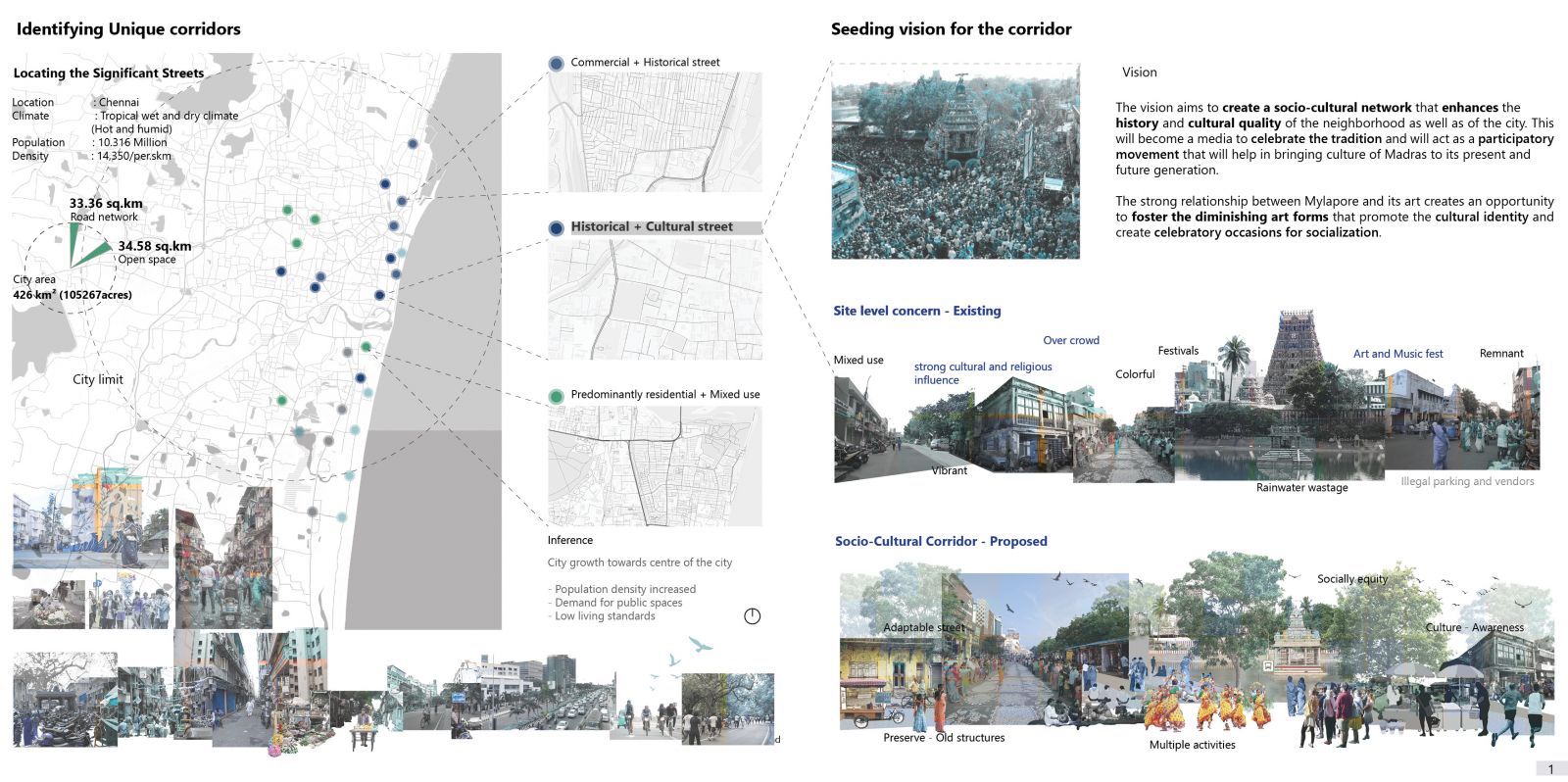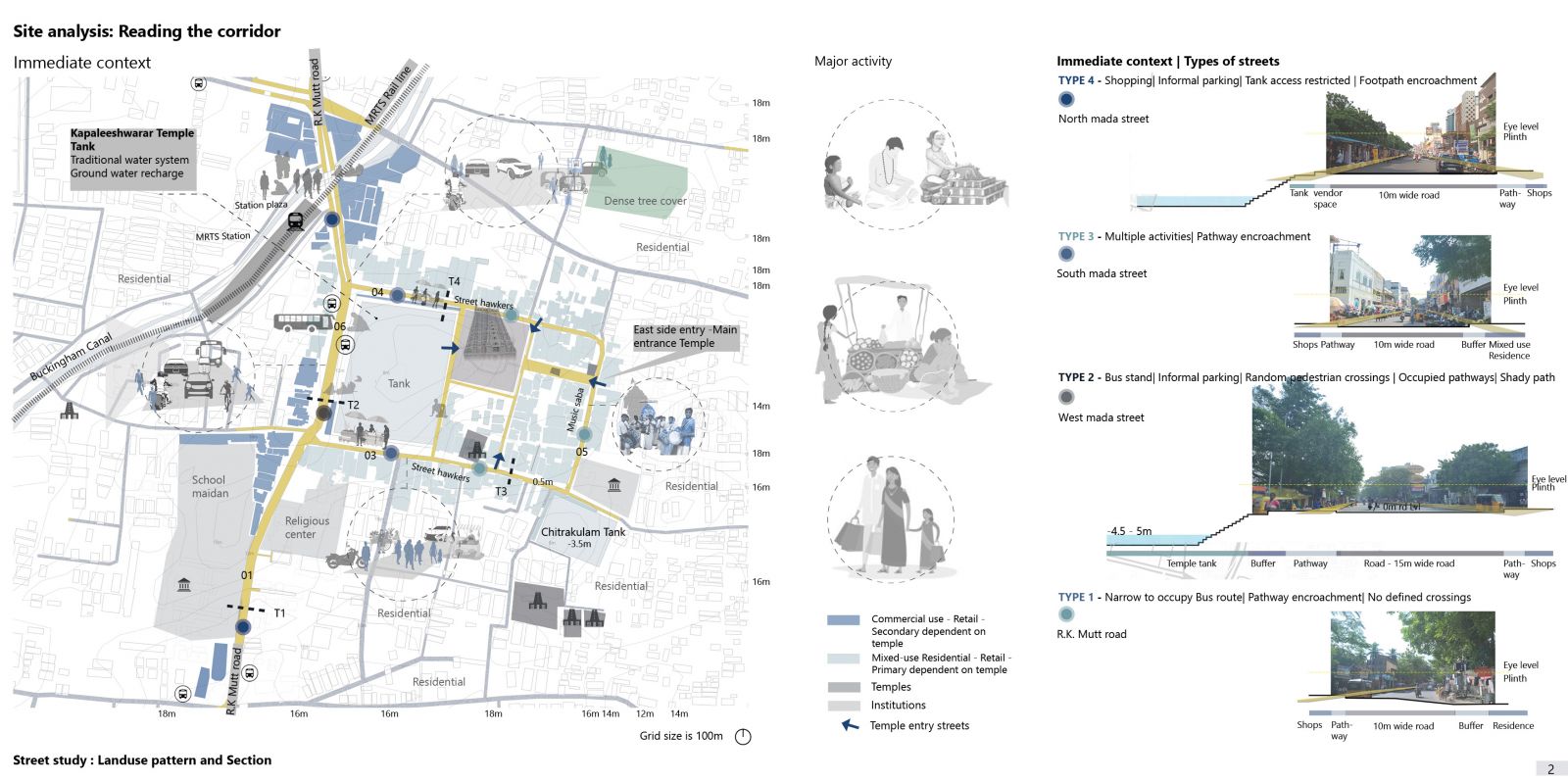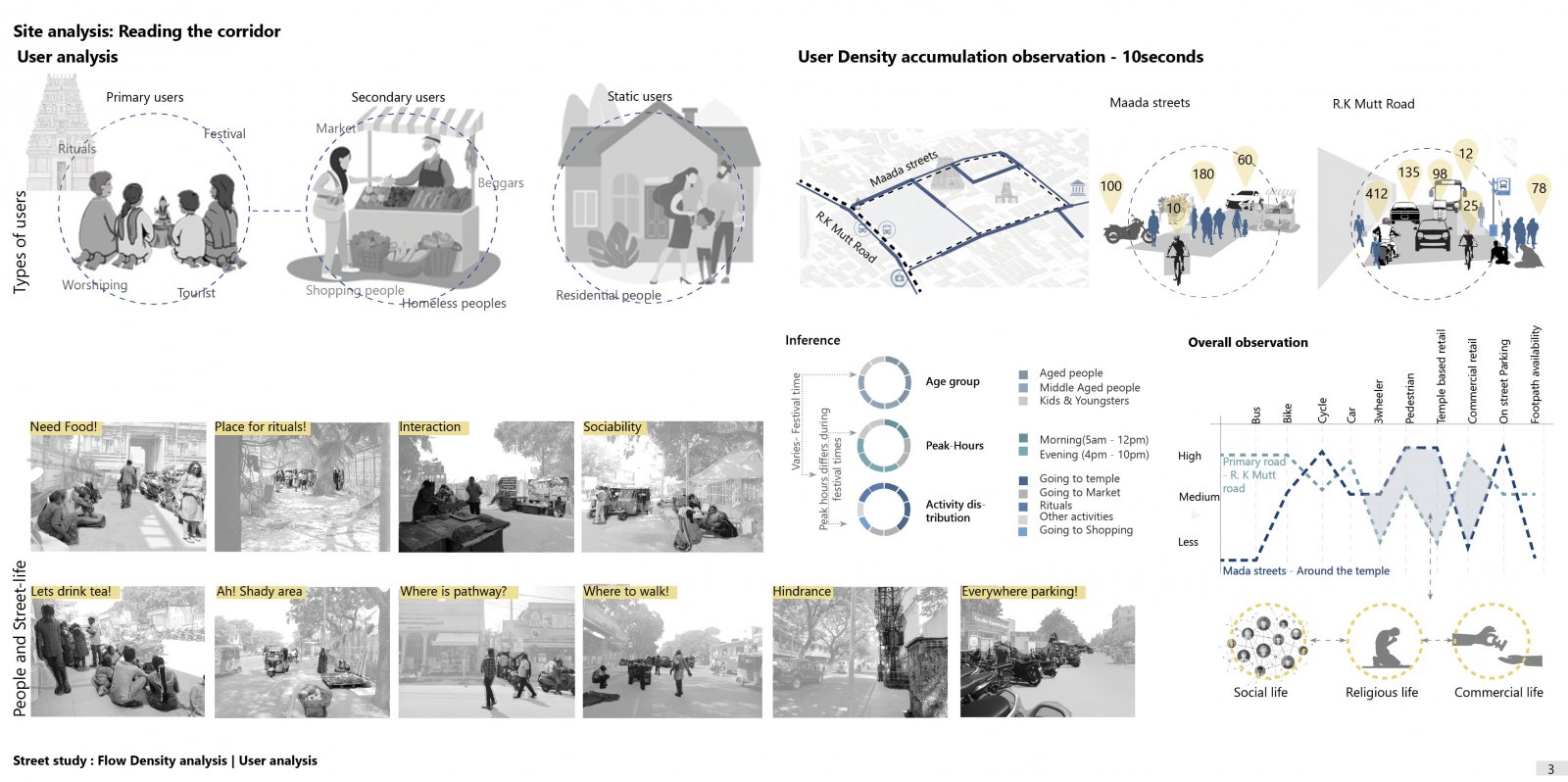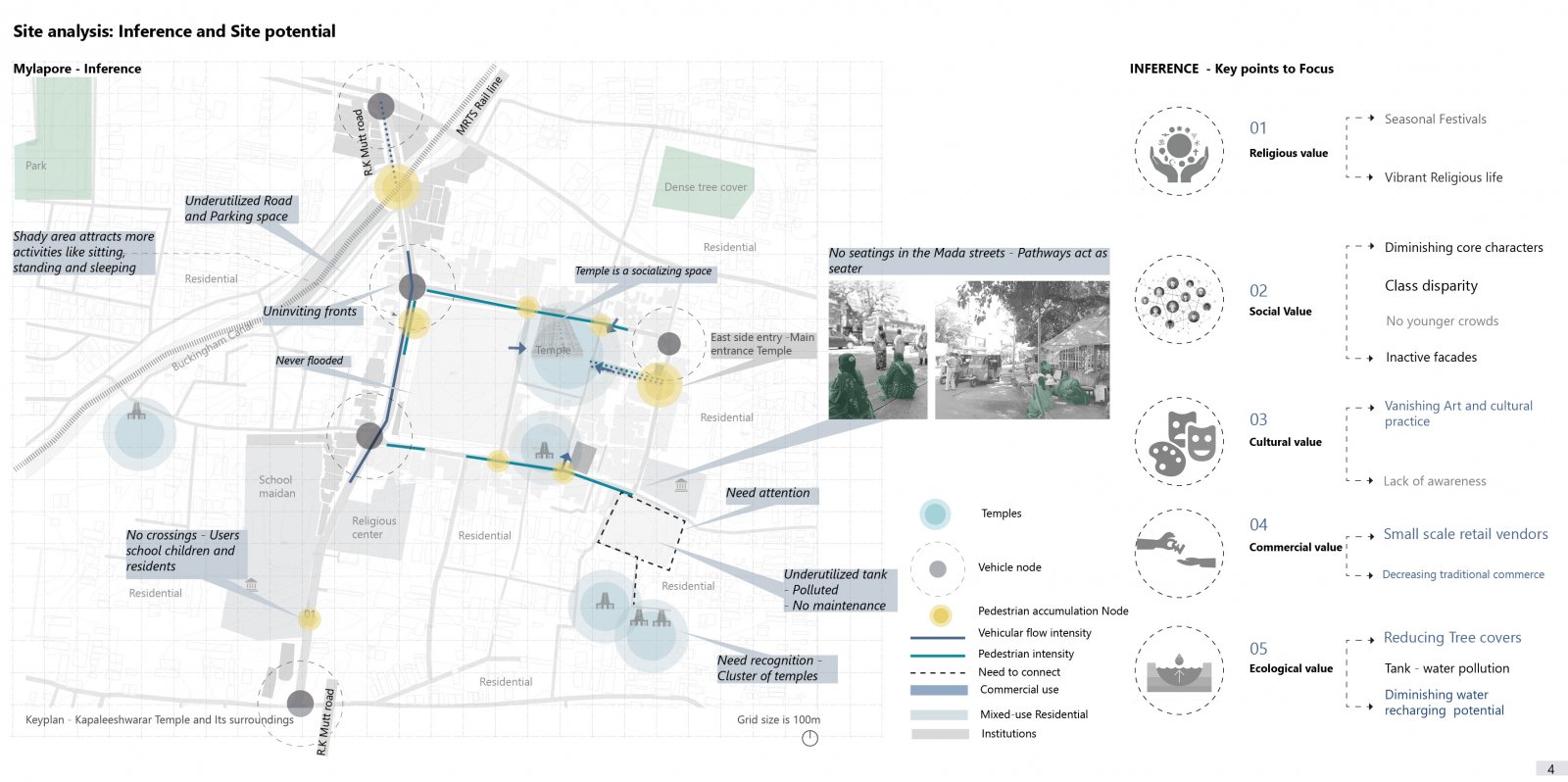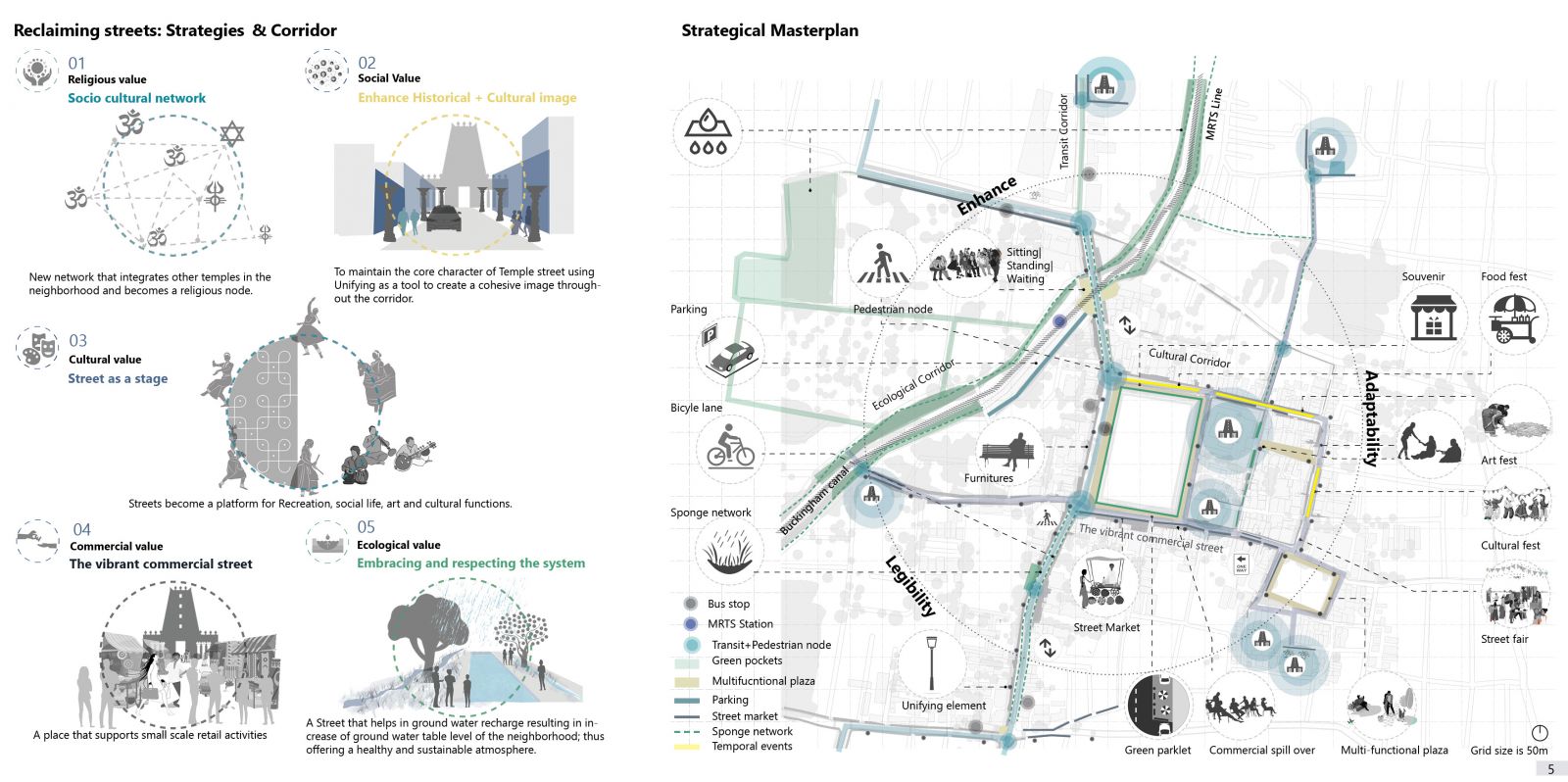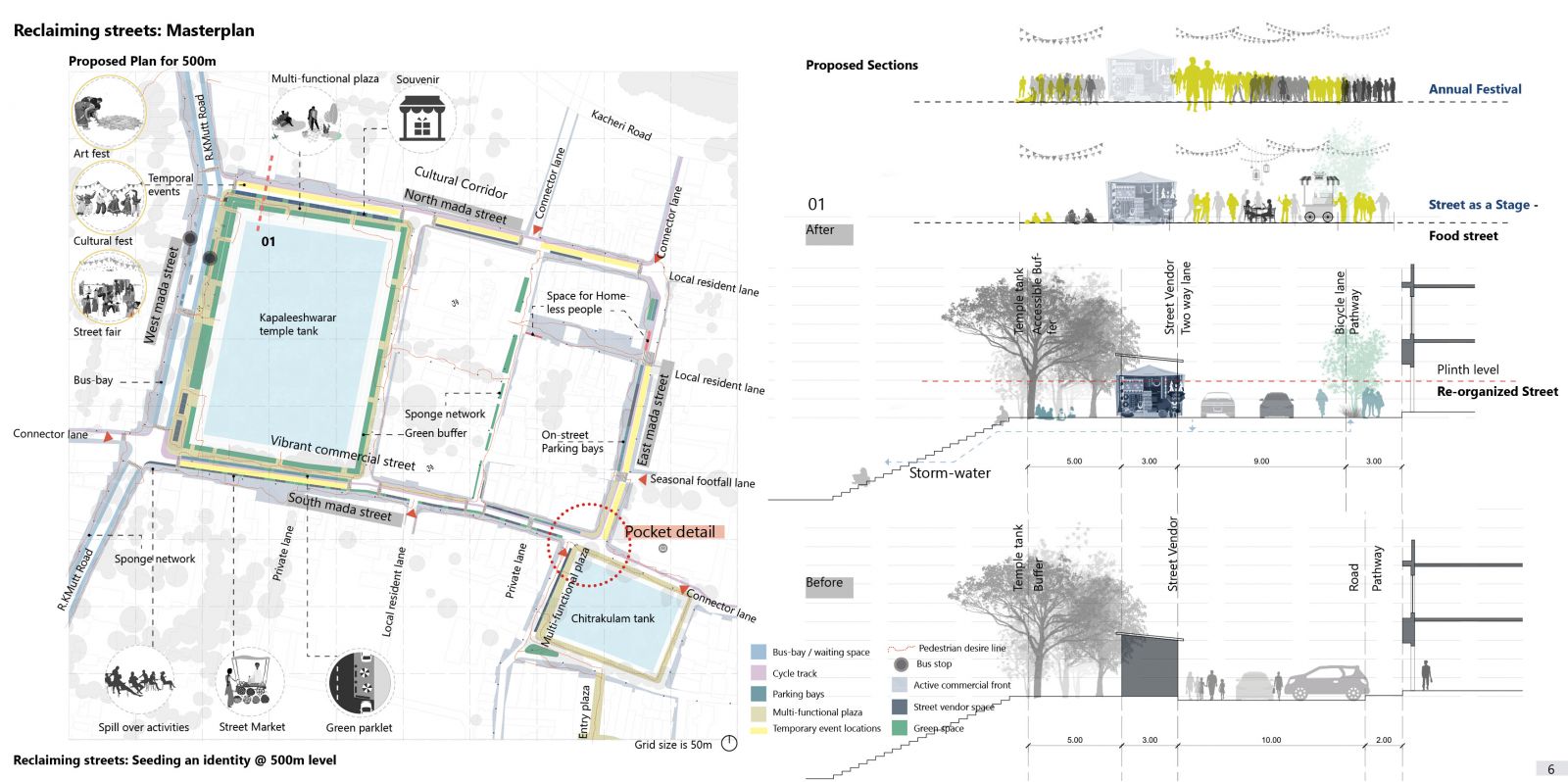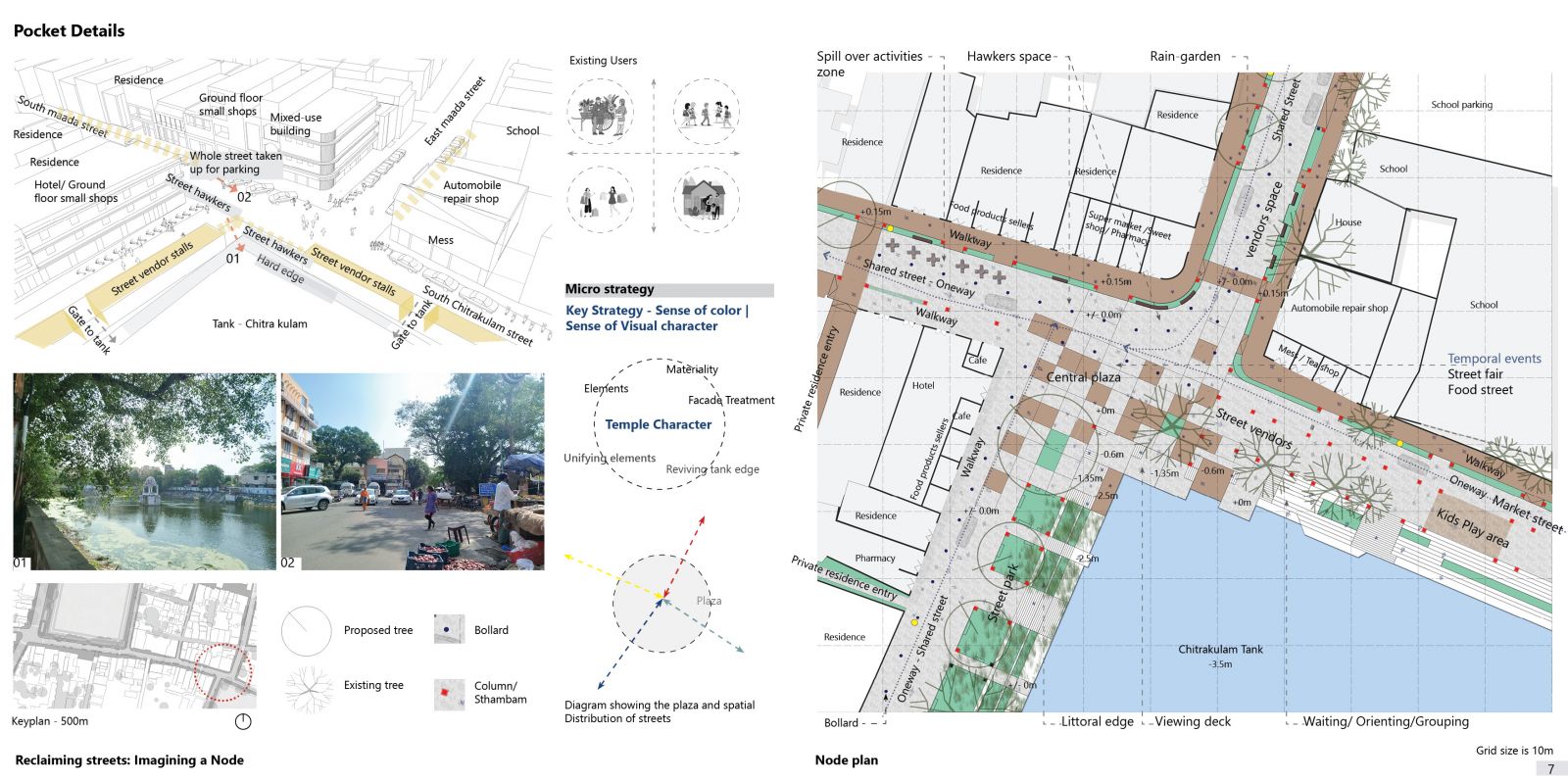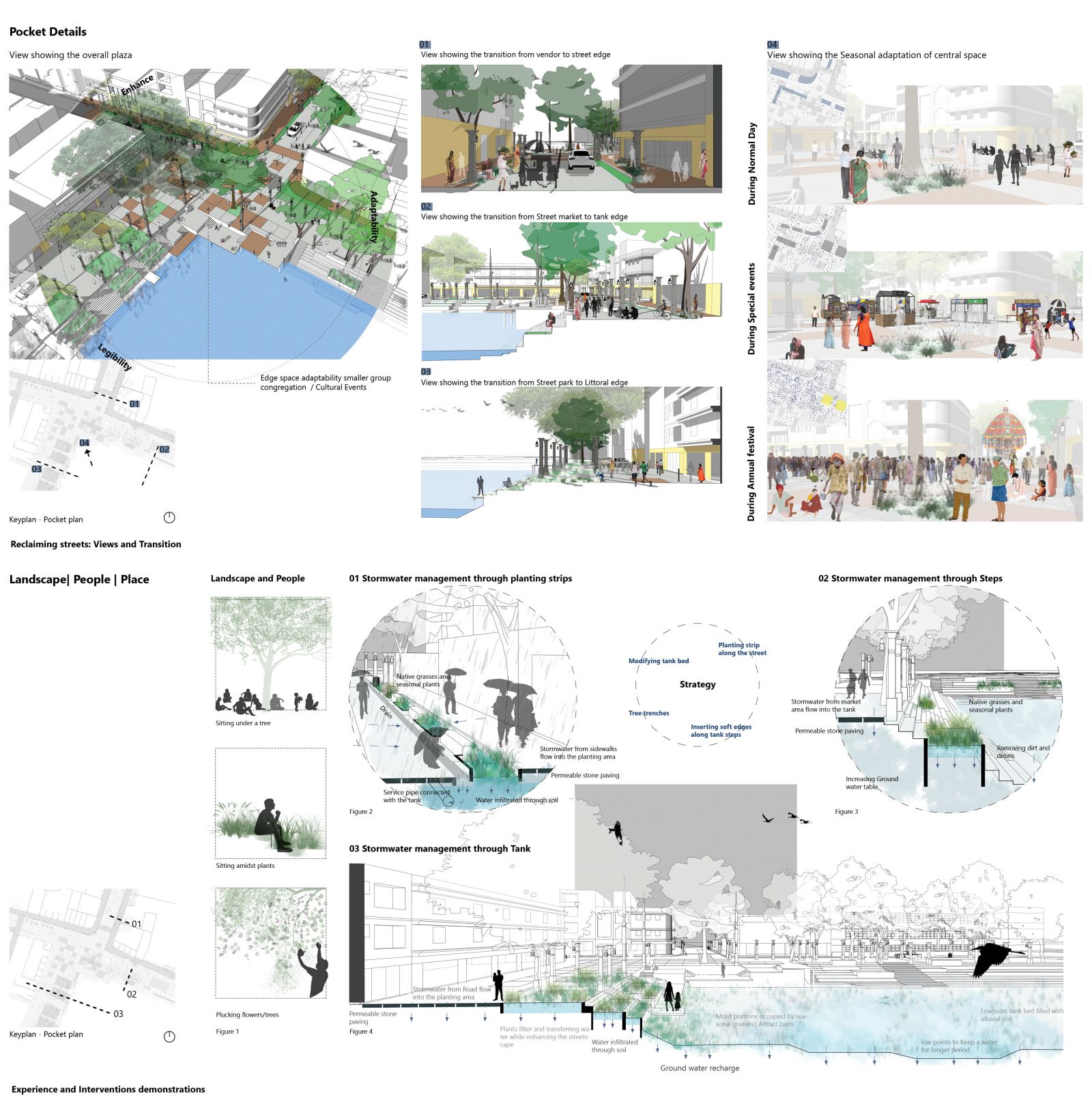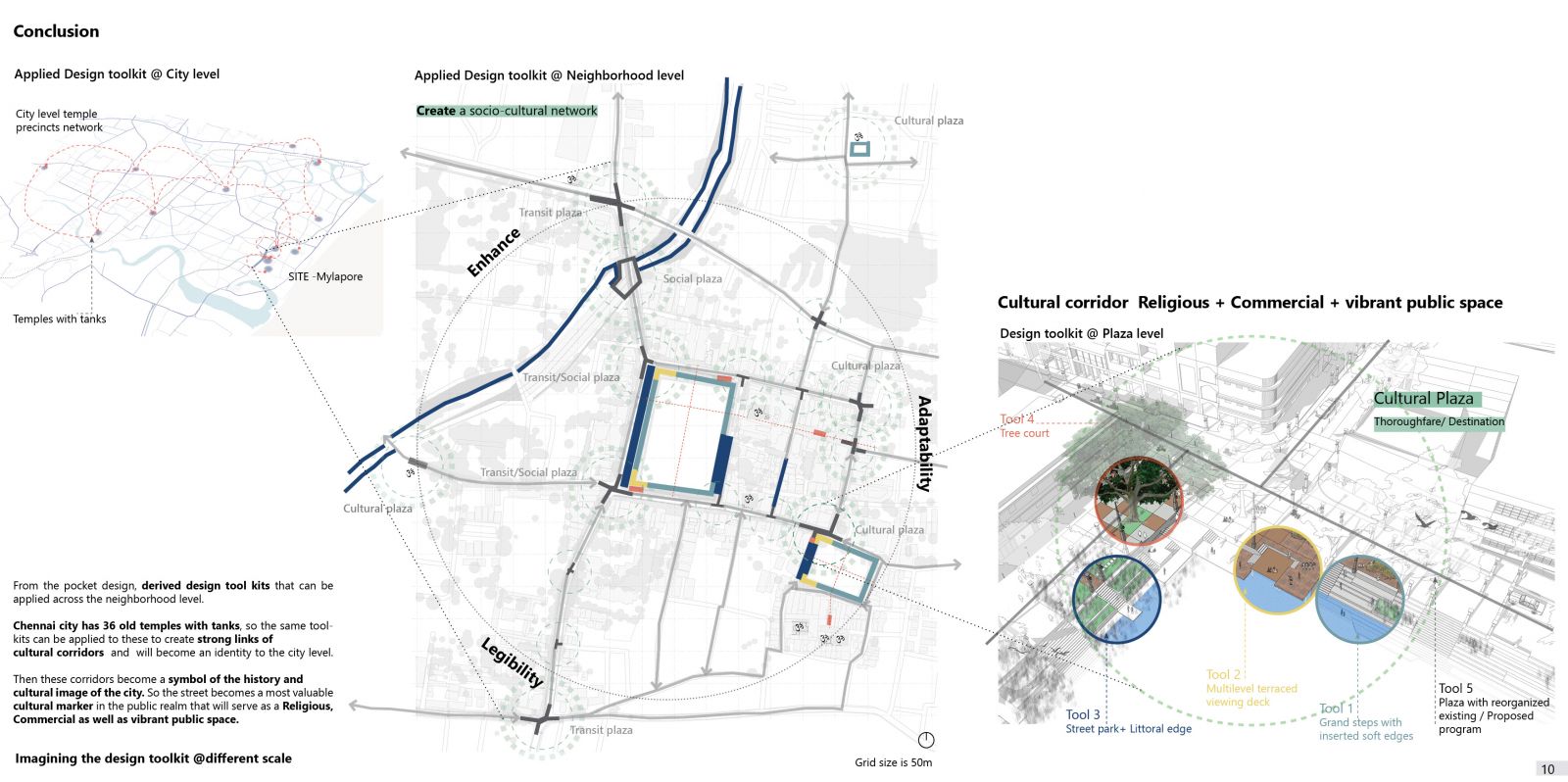Your browser is out-of-date!
For a richer surfing experience on our website, please update your browser. Update my browser now!
For a richer surfing experience on our website, please update your browser. Update my browser now!
Mylapore is one of the oldest and significant temple towns amidst Chennai’s dense urban center - A corridor where religious, cultural, and historical values are merged primarily serving as a religious destination; this is also a major social space for the localities. This corridor supports 80% of small-scale retail activities and contributes to the economy of the city. It is an everyday corridor for daily temple users that transforms to support large annual events. So overall this corridor has strong characteristics of social life, religious life, and commercial life. Thus the proposal on ‘Maada Veedhi’ or ‘Car Street’ aims to create a socio-cultural network that enhances the history and cultural quality of the neighborhood as well as of the city.
